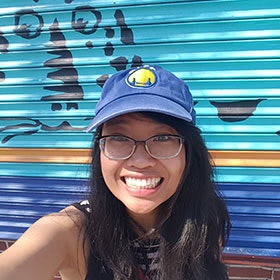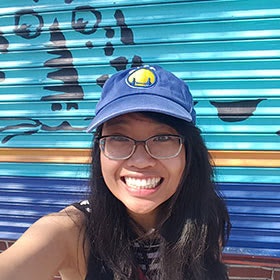The interview process can often feel like putting together a puzzle — both for hiring teams and for candidates seeking a role.
At each step, from the job description to the final interview, everyone involved might be asking things like: How can we best share the story of our work and our values? Are we creating an authentic picture? Are we mutually aligned? It can be a daunting prospect.
But neither the tactical steps nor the human experience of interviewing need to feel that way. When there’s transparency, authenticity, and an intentional process at work, everyone wins: The hiring team feels they have represented the role and the company clearly to find the best candidate, and the job seeker feels they have been heard, respected, and supported throughout.
As a business built around the purpose of supporting customers, we’ve spent a lot of time thinking about and implementing values-led, effective, and human-centered hiring and interview processes at Help Scout. To help other customer-centric companies and folks who are seeking customer service roles, we’re sharing two resources that contain some of the insights and practical steps we’ve developed around interviewing: Our Customer Service Interview Builder and this collection of advice from our very own Customers team.
In the post that follows, you’ll get an inside look at our process from some of the humans who engage in this important work at Help Scout: Katie Harlow, Director of Customer Support; Abigail Phillips, VP of Customers; and Sarah-Mei Estrada, Senior Technical Support Specialist.
Why do interviews matter, anyway?
At Help Scout, interviews are integrated into the hiring process across three stages: An initial “value add” chat with the hiring manager, a “tech screen” conversation with potential teammates, and a final video call with someone from the leadership team.
Why multiple interviews? When so much information is available via professional profiles and carefully crafted resumes, what’s the point of these live conversations? At Help Scout, the interview process has been designed, together with the take-home project, to offer candidates and the hiring team several opportunities to learn and share in a way that just can’t be translated through a resumé or online profile.
“I want to dig into skills, rather than experience, in an interview," Abigail said. While a review of past experience provides a starting point, speaking with a candidate allows the team to understand the skills that person used regularly and how they might approach problem solving, collaboration, and other aspects of a role that don't come through on a resumé.
Together, the interviews will ideally paint a picture of experience, skills, and values. “At the end of the interview process, we want to understand if this person can be successful in the role — and if they feel it’s the right fit,” Sarah-Mei said. “We understand the risk people take when they change jobs, and we want to be confident that they know exactly who we are, the way we work, and why we're doing what we're doing.”
So how do we go about planning and leading interviews that deliver on our goals and offer the best experience for candidates? Read on for five steps we take to create a successful interview process.
1. First things first: A job description sets the tone
Before we can interview anyone, we create a job description that attracts candidates to the role and the company. We want folks who are interested in working for Help Scout to understand both the specifics of the job they are applying for and who we are as a company.
“We really lead with our values in the job description,” Abigail said. “They’re in the first paragraph. We want candidates who are going to be excited to be here and who are going to notice that how we talk about the company reflects our values and is aligned with the experience they’ll have on the team.” That early articulation of values serves as an important draw — and initial filter — for a candidate pool, she added. “More often than not, the first thing that people we interview say is that they were attracted to Help Scout because they wanted to work at a values-driven company.”
Articulating the company’s values is one element of the job description template used across all Help Scout teams, which is customized for each role to include:
An overview of the company and our values;
A narrative description of the role as well as a list of specific tasks and expectations;
Time and location requirements;
The salary range for the role;
An introduction to team members with whom the candidate would work;
An overview of company benefits.
The description is designed to reflect the who, what, and why of the role and of Help Scout, and it’s really the first step in the interview process.
Ideally, the job description giving the candidate not just an idea of what the job is, but also who the team they would be joining is and what the people on the team are like.

Sarah-Mei Estrada
Senior Technical Support Specialist
“I want the job description to offer a real-life view of what the day-to-day of the role is going to look like, so a candidate can really try it on and see if it feels like a good fit for them — or if the position might require deal breakers, things that they don't want to be doing,” Katie said. “People should have all the information they need to understand specific expectations from the beginning so they can self-select out of the interview process if it doesn’t feel right — or to see how it could be a perfect fit.”
Intentionally choosing specific wording is an important step in creating the accurate descriptions Katie mentioned, and honing in on words and phrasing can also help broaden the aperture to attract a wider range of applicants. “We like to include qualities that might help a candidate be successful,” Sarah-Mei said, “like patience or curiosity. We hope that this language allows people to see themselves in a role that they might otherwise not consider, no matter what type of job they’re coming from.”
2. Intentional, consistent questions make the most of everyone’s time
The description has been carefully crafted. We’ve screened applicants to create an interview pool. The next step is to develop questions.
When crafting questions, the Customers team members work from their shared understanding of the skills, experience, and values they’re aiming to add to the team. “I think it's important to have a consistent set [of questions] to use with all candidates,” Abigail said. “You don't want people to have really different interview experiences or to inadvertently create bias. While you may not get to every question in every interview, it's good to have the same baseline.”
As they create questions, Sarah-Mei said, the team is focused on really digging into the intent behind the questions and the goal of that stage of the interview process: “We analyze each question and ask, ‘What's the purpose of this question? Why were we asking it in this set?’” Focusing on consistency and common goals for the information they’re looking for allows the team to more effectively compare and evaluate candidates’ responses.
As an example of how interview stages shape a question set, the team noted the role of the tech screen interview, which is designed to hone in on skills and experience. While the title of this stage may imply an advantage for candidates with extensive support experience, the questions in that conversation can actually be an opportunity for folks from other backgrounds to shine.
“People are solving complex, tricky problems in whatever job they have, and this interview is a chance for them to describe how they’ve solved problems in the context of their other jobs," Sarah-Mei said. "It can tell us a lot about how they walk through a problem, use independent thinking, or work collectively with others.”
Questions about problem solving, whether with customers or collaboratively with teammates, can also offer insight into a candidate’s values and how they might align (or not align) with the Help Scout team. “Asking people for concrete examples of how they handled a difficult customer can tell us how they might interact with coworkers,” Abigail said.
For candidates who are selected to progress after the tech screen interview, a take-home project provides a lot of helpful information for the hiring team and helps shape interview questions as well. How a candidate approaches the project, specific aspects of the work, and their general approach to the challenge can all inspire questions in the next (and final) interview.
It’s also another opportunity for candidates from a wide range of backgrounds to highlight their skills. “The project is a great equalizer,” Abigail said. “Some people who are very experienced in support will get totally flummoxed by the project, and others — with and without support backgrounds — will jump in and cruise through it.”
When we developed the project for customer support, we aimed to reward people for skills they might use in a support role but could actually be drawn from a wide range of past work experience. We're looking to see, for instance, are they a thorough reader? Can they interpret a customer's question? Can they tone match? Do they have good writing skills? Can they make autonomous decisions? Really it's about understanding how a person can understand and impart information.

Abigail Phillips
VP of Customers
And, she added, the project offers the hiring team another opportunity to get a sense of a candidate’s values: “If you make a mistake on the project, that can be an opportunity to show us that you’re able to acknowledge that and learn from it. We want to work with people who are going to be able to say, ‘I made a mistake. I'm going to admit that.’” Project work also reflects Help Scout’s values: We pay folks for the time they spend on the project, and they receive detailed feedback, both of which go a long way toward showing how we honor their time and effort.
3. Simple prep steps enhance the interview
While the right questions go a long way toward the goal of a productive, efficient interview, taking the time for meaningful prep steps before the conversation can enhance the experience for the hiring team and the candidate.
“I generally read through a candidate’s entire application, which, for support team roles, includes a series of questions about themselves and a couple of sample responses to customers that they will have provided ahead of time,” Katie said. As she reviews all the information, she’s thinking about how the person would fit into the existing team — via skills, experience, and values — and is also thinking ahead about aspects of their application that she wants to know more about.
Katie might also seek out information about companies the candidate has listed in past work experience. “Some quick research will give me a baseline so I can ask informed questions. I really want to be able to dive into the more meaty stuff during the interview,” she said.
Abigail agreed that spending a bit of time researching a candidate’s past employer can offer valuable perspective and allow for a bit more depth during the interview. “If we're hiring for a customer-facing role,” she said, “I sometimes look into customer reviews of their former company, which can tell me a bit about what kind of environment they’re coming from and understand the perspective of how that person might approach support given their past role.”
4. In the moment: Strategies and tools for listening and learning
With the questions ready and the individual prep work complete, it’s time for the interview itself. The Customers team has several strategies and tools they tap into to help ensure they make the most of the opportunity to learn about a candidate and to share about the company.
“We love to co-interview,” Sarah-Mei said. “With our questions prepared, we’ll choose ahead of time who’s going to ask which question. While one person is asking the question, the other person will be taking copious notes.” (The team is always sure to tell the candidate at the top of the interview about the notetaking to avoid the impression that team members are distracted.)
The notes play an essential role in the team reflection and evaluation process that follows an interview. “I’m writing down pretty much the gist of every sentence someone is saying to me,” Katie said, “and then we’re sharing those notes out with everyone on the hiring team so they have a good sense of the conversation.” If a question or concern comes up in one interview that the team wants to dig into more deeply in the next round, the notes provide valuable context.
I think notes are very helpful for painting a full picture for the next person who will be talking to your candidate.

Katie Harlow
Director of Customer Support
While notes can be helpful in retrospect, “Don’t forget to still be very present and listen in the moment,” Sarah-Mei advised. And if you’re asking questions and don’t feel that the response is really getting you the information you’re looking for, don’t hesitate to ask again. “It's okay to re-ask a question or to ask for a second example of something you’re trying to understand,” she said.
For those in a hiring role, being present and aware of not only how you’re conducting the interview but of any inherent prejudice you may have is also key to reducing potential for bias in the process. Help Scout team members who participate in hiring all undergo interview training, part of which includes insight into recognizing and mitigating bias.
For Katie, the interview training has been really helpful in raising her awareness of bias, and the trusted relationships among the Customers team have led to honest and transparent conversations. “I'm very grateful that I feel safe with the other folks on our team. If something feels off to me, I can bring that up honestly and ask my teammates what they think.”
Abigail added that co-interviewing also helps mitigate bias: “It gives you another person to bounce your perceptions off of — someone who is approaching the conversation with different experiences and opinions.”
No matter how aware and intentional you are, Sarah-Mei said, it’s also important to acknowledge that at some point in the interview process, you’ll likely be confronting your own and others’ biases, which isn’t easy. “At each stage, there are times when it feels uncomfortable, and it’s important to recognize that in yourself and be willing to call it out in others,” she said.
When this happens, tapping into curiosity can help you push through the discomfort to evaluate the information or emotion beneath. “I’m always trying to dig into the why behind a perception — whether it’s positive or negative. The ‘yes’ or ‘no’ is not enough,” she said.
We should go deeper to ask ourselves or our teammates specifically what was said or what was shown that sparked that reaction and go from there.

Sarah-Mei Estrada
Senior Technical Support Specialist
The intentional commitment to examining and mitigating bias is another way the team hopes that each interview conveys Help Scout’s values at every stage of the interview process. “We’re aware of how the focus on values carries over to the way we speak and interact in each interview,” Abigail said. “We want our words and actions throughout the interview stages to be aligned with what a candidate has read in the description.”
5. Clarity and kindness conclude the process
At the end of the day — or, in this case, in a candidate’s final interview — the goal for the Help Scout hiring team is to close out an interview feeling they have learned, listened, and led with values.
“The interview and the project provide a good set of clues, but they’re not going to be able to tell us definitively if this person's going to be a great fit,” Sarah-Mei shared. “It’s our job to take all of the information and interactions we’ve had and ask, ‘Will this person be successful in this role?’ And, importantly, do they feel that they can be successful here? I want them to feel they have all the information they need to answer that and not have any lingering questions.”
From a practical standpoint, Katie said, it’s also important that there’s clarity for the candidate about next steps in the hiring process. “I want to provide really clear expectations of what will happen next at each stage, so we convey all of that information at the end of every interview,” she said.
Abigail said, “We want to meet you as you really are — or as much of that as you can share with us in a 30- to 45-minute interview. It's an imperfect form of getting to know somebody, but we want to be sure that anyone who we interview feels as comfortable as possible.”
Ultimately, Sarah-Mei concluded, whether someone completes one interview or three, “I want every candidate to feel that we’ve really been listening and that they have felt able to show us who they are and not who they think we want them to be. I hope it feels like a really true experience.”



